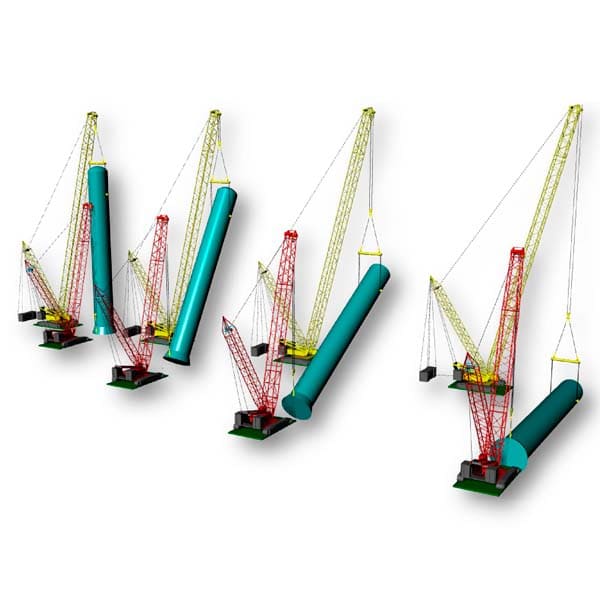The process of carrying out heavy cargo transportation
Placement of cargo on the ship

The process of placing cargo on a ship consists of the following
tasks:
To perform the above works, it is necessary to provide a drawing or diagram of the general arrangement of the vessel on which the transportation of goods is planned, the geometric characteristics of the cargo spaces (length, width, height, drawing of the midship frame), the strength characteristics of the ceilings on which the cargo is planned to be placed (permissible load on the double bottom , tween deck covers, hatch covers of the upper deck), a list of goods for transportation (packing list), containing data on the weight and size characteristics of the cargo, as well as indications of the possibility of its stacking and transportation on the open deck.
Results can be provided in PDF, XLS, XLSX formats ● ● ● In the process of assessing the possibility of transporting cargo and drawing up a cargo plan, an integrated approach to solving the problem is used, including taking into account the fulfillment of the requirements for the strength of ship structures, taking into account the fulfillment of the requirements for the stability of the vessel, taking into account the wind and wave situation on the route of the planned passage of the vessel, as well as taking into account the surface gauge and draft restrictions on the route of the planned passage of the vessel.
The quality of the work performed meets the requirements of the Classification Societies for sea and river transportation of goods.
- analysis of the customer's packing list in order to assess the possibility of transporting cargo on a particular ship;
- analysis of the customer's packing list in order to select a vessel suitable for its transportation;
- assessment of the possibility of cargo transportation;
- assessment of the required volume and area of holds;
- the scheme of cargo stowage on the ship may be an integral part of the project for the transportation of bulky or heavy cargo, carried out in accordance with the requirements of the Rules of the Register or another classification society.
To perform the above works, it is necessary to provide a drawing or diagram of the general arrangement of the vessel on which the transportation of goods is planned, the geometric characteristics of the cargo spaces (length, width, height, drawing of the midship frame), the strength characteristics of the ceilings on which the cargo is planned to be placed (permissible load on the double bottom , tween deck covers, hatch covers of the upper deck), a list of goods for transportation (packing list), containing data on the weight and size characteristics of the cargo, as well as indications of the possibility of its stacking and transportation on the open deck.
Results can be provided in PDF, XLS, XLSX formats ● ● ● In the process of assessing the possibility of transporting cargo and drawing up a cargo plan, an integrated approach to solving the problem is used, including taking into account the fulfillment of the requirements for the strength of ship structures, taking into account the fulfillment of the requirements for the stability of the vessel, taking into account the wind and wave situation on the route of the planned passage of the vessel, as well as taking into account the surface gauge and draft restrictions on the route of the planned passage of the vessel.
The quality of the work performed meets the requirements of the Classification Societies for sea and river transportation of goods.

Load fastening
The process of securing cargo on a ship consists of the following
tasks:
To perform these works, it is necessary to provide a cargo layout plan, a crossing route and a list of available fasteners.
Submissions must be in a non-editable format (e.g. PDF) and must be of a quality that meets the requirements of the Classification Societies for maritime and inland shipping.
- cargo securing scheme;
- calculation of the quantity and nomenclature of the required fastening material;
- an accompanying note containing the calculations;
- the cargo securing scheme on the ship may be an integral part of the project for the transportation of bulky or heavy cargo, carried out in accordance with the requirements of the Rules of the Register or another classification society.
To perform these works, it is necessary to provide a cargo layout plan, a crossing route and a list of available fasteners.
Submissions must be in a non-editable format (e.g. PDF) and must be of a quality that meets the requirements of the Classification Societies for maritime and inland shipping.
Navalista provides
professional
services for the placement, securing and further transportation of goods. We are a team of
professionals.